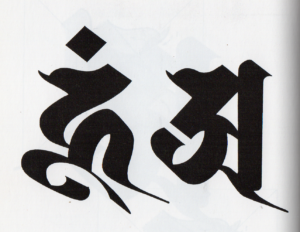
The history of the script as a holy word
First of all, it appears in this book, such as , Sanskrit, seeds, 仏 and 仏.
Let’s organize the terms related to. If you are confused, you should understand
Two things are important.
The language “Sanskrit”, which has been used in India since ancient times, is called “梵”. Write this
The character used to do this is “梵”. Although the typefaces of the Kanji changed with the times, usually in Japan
Speaking of kanji, it means “の “, which is one of them.
By the way, as mentioned above, “seeds” the Japanese syllabary symbol symbolizing the Buddha, Zen, Mingo, Tenbe, etc.
It’s called. The seeds of “f” are not recorded as mere Buddha’s initials, but all of one’s worth
It is believed that it is stored in the temple, and it has been treated with great care as the Buddha of the Indigo character, that is, the Indigo Buddha.
Mr. Mitsui Shoen Sensei named it “Letters”.
Holy letters, letters of law
Kanji is a Chinese translation of Brahmi in the Tang Dynasty. Brahman is a Brahman creation god, who has been in India before Buddhism took place, in the sense that “brahmi is brahful.”
It is a heavenly one. There is a name of “梵” based on the legend “梵 made by 梵”.
However, there is no definite idea as to when Brahmi characters were actually born. The oldest extant ones written in brahumi are also inscribed by the famous King Ashoka.
It is said to be in the middle of the century.
King Ashoka (Resided by BC 2268-232) is the third king of the Mauritians,
It unified the whole of India except the southern part and built the great empire. The king deeply turned to Buddhism, and Buddhist faith and
In order to notify the people of the protection, we set up a stone-marked writing throughout the country. Yubun is carved in pillars and rocks,
It is known that the Zen language (in fact, the Plague-lit language of the Zen dialect) is used, but some Greek and Aramaic
What is written is also found in the language (international language in the West Asian world at the time).
